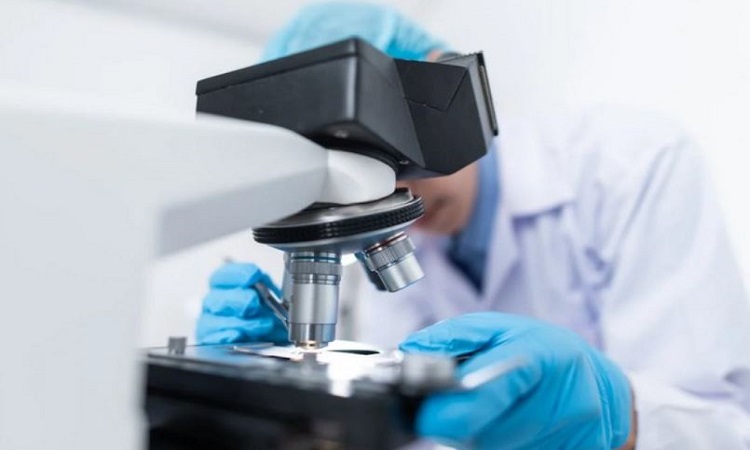Study finds how body reacts to high or low oxygen levels
It only takes a few seconds of holding your breath to know that not obtaining adequate oxygen is detrimental to your health. Read further on Dynamite News:

California: It only takes a few seconds of holding your breath to know that not obtaining adequate oxygen is detrimental to your health. Is it possible, however, to have too much? Indeed, breathing air that contains more oxygen than your body requires can lead to health problems or even death.
But with scant research on the topic, scientists have known little about how the body senses too much oxygen. Now, a new study from Gladstone Institutes has greatly expanded the scientific body of knowledge about the mechanisms at play, and why it matters for health.
Their findings, reported in the journal Science Advances, explain how breathing air with different levels of oxygen--from too little, to just right, or too much--affects the creation and degradation of different proteins in the lungs, heart, and brain of mice.
Notably, the study also highlights a particular protein that may play a central role in regulating how cells respond to hyperoxia.
"These results have implications for many different diseases," says Gladstone Assistant Investigator Isha Jain, PhD, senior author of the new study. "More than 1 million people in the US breathe supplemental oxygen every day for medical reasons, and studies suggest it could be making things worse in some cases. That's just one setting where our work is starting to explain what's happening and how the body responds."
Understanding Oxygen's Effects
Most prior research on oxygen levels has examined the molecular effects of too little oxygen. And even in that realm, most of the focus has been on how low oxygen affects which genes are turned on or off. "Our study enters uncharted territory by using mice and looking downstream of gene expression at which proteins abnormally accumulate or degrade in response to different oxygen concentrations," says Kirsten Xuewen Chen, first author of the new paper and a graduate student at UC San Francisco.
Also Read |
Injury to one part of body can trigger healing response in another: Study
The research builds on the team's prior work, which revealed that in response to too much oxygen, certain proteins containing iron and sulfur clusters become degraded, leading cells to malfunction.
"Now, we wanted to get a more dynamic picture of how proteins are regulated when oxygen levels are too high or too low," Chen says.
To do so, the team exposed mice for several weeks to air with oxygen level of 8 percent, 21 percent (the usual level we breathe in Earth's atmosphere), or 60 percent.
Meanwhile, they gave the mice food containing a distinct form of nitrogen that the animals' bodies incorporated into new proteins. This nitrogen isotope acted as a "label" that enabled the researchers to calculate protein turnover rates--the balance between protein synthesis and degradation--for thousands of different proteins in the lungs, heart, and brain.
"We're grateful to our collaborators who are the experts in this technique, known as stable isotope labeling of amino acids in mice," Jain says. "Without it, we could not have done this study."
A Key Protein Builds Up
The researchers found that oxygen levels more dramatically affected proteins in the lungs of mice than the heart or brain. They identified certain proteins with abnormal turnover rates under high- or low-oxygen conditions.
Also Read |
Researchers find how ketogenic diet improves severe mental illness
One particular protein that accumulated in high-oxygen conditions, MYBBP1A, piqued their attention. MYBBP1A is a transcription regulator, meaning it directly affects gene expression.
"This caught our eye because prior research has shown that other transcription factors called hypoxia-inducible factors, or HIFs, play a big role in cells' response to low oxygen," Chen says. "Our work nominates MYBBP1A for a related role in hyperoxia signaling."
MYBBP1A is involved in the production of ribosomes--cellular "machines" that build proteins. Further experiments surfaced clues that, in response to high oxygen levels, accumulation of this protein in the lungs may affect production of ribosomal RNA, a key component of ribosomes.
Jain's team is now examining the precise molecular role of MYBBP1A during hyperoxia, including whether its response is protective or harmful. This work could set the stage for novel treatments that target the MYBBP1A protein or associated molecules in ways that counter the bad effects of hyperoxia--similar to widespread research efforts targeting HIF proteins in low-oxygen conditions.
First-of-Its-Kind Dataset
The new study presents a first-of-its kind dataset of protein turnover rates in different tissues of mice exposed to different oxygen levels. The team hopes its results will inspire other researchers to further investigate the effects of too much or too little oxygen on the body, which could transform the way we treat disease. (ANI)
 Dynamite News
Dynamite News 